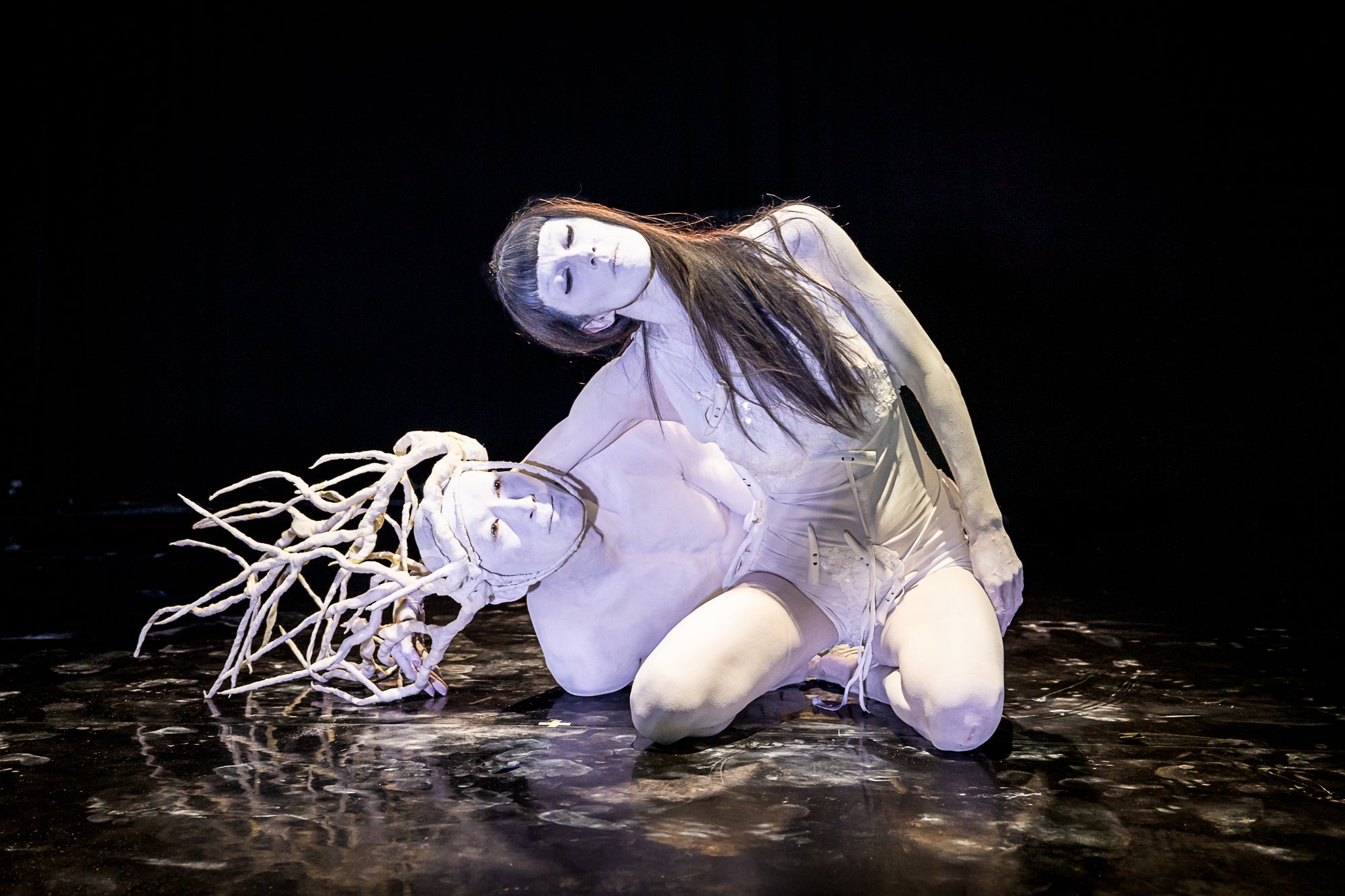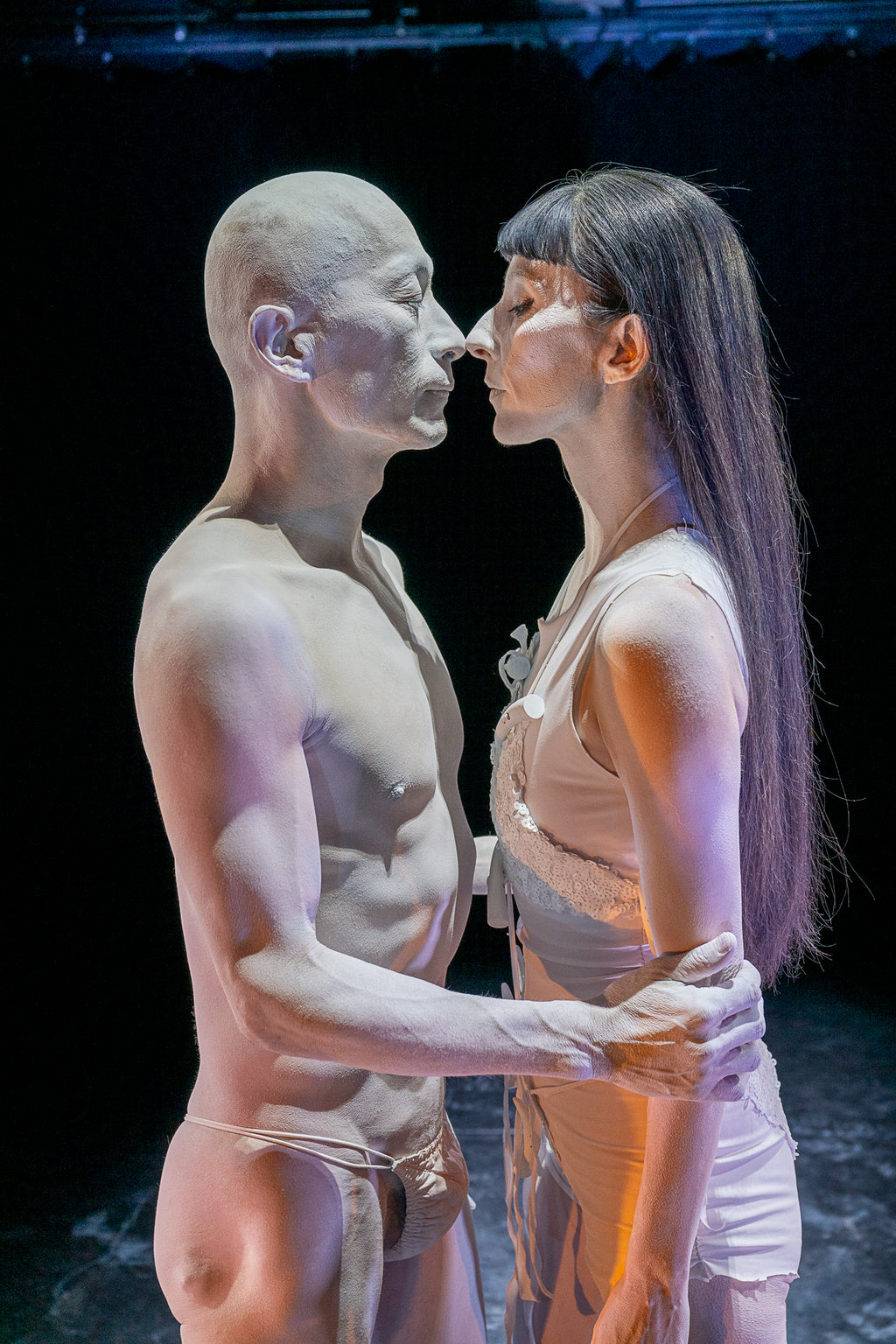Fjord Review: Ichi, what inspired you to form your own dance company, Elf, in 2022?
Ichi: The motivation was to perform outside of Japan without borders or boundaries. Elf is the means for accomplishing this.
What does the name signify?
Ichi: I didn’t want to call it the Ichihara Dance Company. So I visited a psychic and described my intentions for the company. I explained that I wanted to tour and work without borders and boundaries and with everyone in the world. Also, I am working with a younger generation of dancers—20-year-olds. The psychic responded that the name Elf would convey a helpful, magical quality.
How does the dance work differ from what you do with Sankai Juku?
Ichi: The basic physical method is almost the same. My background is basically Sankai Juku, but when I was young, I was in a lot of other Butoh groups, and I trained with many people from the older generation. Outside of Sankai Juku, there are very few who actually have an organized system or physical method like ballet or Martha Graham technique.
Next year, Sankai Juku will celebrate its 50-year anniversary. In these 50 years, we have created many stage works. We are very precise about keeping the work authentically. There is no rearrangement. The Sankai Juku method makes this possible.
Are they creating new work?
Ichi: Oh yes. To put things in perspective, it’s helpful to know the background of Butoh. It has a history as an expression against something—against society, history, traditional art, and even beauty. The style was very underground and grotesque. Today, there are still many people who insist on keeping it this way. For this, they do not need a clear, critical method. Sankai Juku, in contrast, turned its focus toward the body and a physical method for choreographing dance.
Sankai Juku was founded in 1975. Around 1980, they went to France and began to tour. They left the underground, grotesque Butoh scene in Japan and started to create something different—a high level performing art that could tour the world. At the same time, they were also being exposed to contemporary and western dance styles. In fact, Sankai Juku’s founder Ushio Amagatsu had skills in western dance styles, such as Graham technique. So there was quite a difference between what he was doing and the rest of the Butoh world. Amagatsu focused on choreographing using his own Butoh method. At the beginning, Sankai Juku was comprised of four or five male dancers and they focused on their own way. They created a physical method that we now continue.
I joined in 1997 and have been in Sankai Juku now for 27 years. Today I am a dance master. I also train the younger dancers. My teaching method is based on Sankai Juku’s method.
What are the hallmarks of this method?
Ichi: Relax, release, be natural, and work with gravity. Our Butoh is a dialogue with gravity. The basic element is the naturalness of the body. We try to find or observe the universality of the human body—not just the Japanese body. You see, many Butoh performers insist that Butoh is about the Japanese body. We don’t see it that way. We focus on the universality of the human body.
Where would you like to take Butoh training now?
Ichi: I think Butoh is growing to as high a level as ballet or modern dance. But of course, we need training. A lot of Butoh is very subjective and I think all Butoh dancers should be more objective. I personally try to work with ballet and modern dancers to learn other qualities. I don’t see any future in just doing one kind of dance. I am also working with young people who have no experience with Butoh. I want to learn from them. I can work with anyone who wants to dance Butoh.
So your goal is to develop higher quality Butoh dancers?
Ichi: Yes, and I want to expand the possibility of Butoh. I want to make a new future—maybe not even Butoh—simply dance! In fact, I had an invitation from a contemporary dance company outside of Japan to create a new work for them. It’s a good opportunity to expand the possibility of the dance.












comments